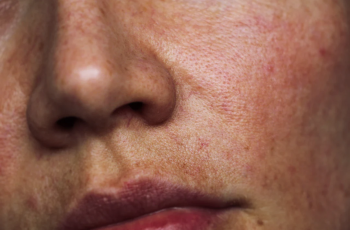
Our hands are often a part of the body that is always forgotten when it comes to skin care products. We invest time, effort, and money into making sure our faces have layers of serum and are protected by a daily SPF. However, when it comes to our hands, a quick swipe of moisturizer every now and then seems to be the answer.
But today we want to give you the best advice to help you never neglect your hands again. This also leads to a question we’ve seen recently: Can I use a lactic acid peel on my hands too?
Well, wait no longer because we are going to explore this further and by the end of today’s blog post we will have a better understanding of how to use lactic acid on your hands.
What is lactic acid?
It is derived from kefir, which contains lactic acid, and is one of the mildest members of the AHA family.
Suitable for all skin types and can be used in professional treatments such as peels and facials.
Due to its very large molecular size, it cannot penetrate deeply into the lower layers of the skin. This makes this acid a favorite for people with dry skin types prone to redness and sensitivity.
It removes the buildup of dead skin cells on the skin’s surface that, if left behind, can lead to acne and blemishes.
Fight signs of aging by reducing the appearance of fine lines and wrinkles.
Helps restore dull and dull complexions.
Has moisturizing properties, which means it draws moisture from the air around the skin and locks it in place.
Lactic acid is known for its ability to work effectively both alone and in combination with other active ingredients.
If you’d like to learn more about lactic acid and its benefits for your skin, read our dedicated blog post.
Now that you know a little bit about lactic acid and its effects on the skin, you may be wondering what benefits it has for your hands and whether you should use it.
As we age, our hands lose fat and elasticity, causing the skin to become translucent, sometimes look gray, and develop a wrinkle-like appearance, with dark spots and wrinkles appearing on the skin’s surface.
It’s common and somewhat unavoidable, but there are methods you can incorporate into your daily life to repair some of the damage and prevent further aging of your hands. Here are some of the most popular ways to ensure your hands look young.
Moisturize your hands – If your hands become dry, you’ll notice they look worse. Keeping them moisturized will make you feel more comfortable and reduce dryness or flaking of the skin.
Exfoliation – By exfoliating your hands, you can target dark spots on your skin and reduce pigmentation. Exfoliation is also another way to minimize areas of dry skin.
Wear SPF – Our hands are one of the first parts of the body to show signs of aging. Use a hand cream with an SPF of 30 or higher to protect your skin from overexposure to harmful UV rays.
Can I put lactic acid on my hands?
Yes, you can definitely put lactic acid on your hands. If you want to combat the signs of hyperpigmentation or rough skin, a gentle chemical peel containing lactic acid can remove dead skin cells and reduce dark spot pigmentation.
You can find lactic acid in many over-the-counter formulas, which can be mixed into medical formulas.
You may find that the best way to benefit from lactic acid when applied to your hands is to apply it at night. This is due to limited exposure to free radicals such as pollution, UV rays, and other environmental aggressors, allowing lactic acid to work undisturbed and quickly.
Can lactic acid burn the skin?
Yes, lactic acid can burn the skin. Surprisingly, the popular chemical acid is considered one of the mildest AHAs. But don’t forget that lactic acid is still an exfoliating acid and can cause itching, burning, redness, and rashes if used incorrectly.
If you’re not sure whether to incorporate lactic acid into your daily routine, talk to your doctor or dermatologist to determine what’s best for you and your skin’s needs to find the right product.
Do I need to wash off lactic acid?
This depends largely on the product formulation. Lactic acid is used in a variety of products, including facial cleansers, toners, serums, and moisturizers. These all come in different consistencies and are applied to the skin in different ways.
The beauty of lactic acid is that you can rinse it off your skin or leave it on overnight, especially when included in over-the-counter skin care products. The latter may require you to build a tolerance initially, especially if you have an allergic skin type.
To avoid unnecessary irritation, perform a 24-hour patch test. You can apply a 10p-sized amount to the inside of your forearm and leave it on overnight.
In the morning, check to see if the skin in the area looks inflamed, itchy, or red. This is a clear indication that the product is not suitable for your skin.


